...for now we have not one planet only revolving about another, while both traverse a vast orbit about the Sun, but our sense of sight presents us four stars circling about Jupiter, like the Moon about the Earth...The Starry Messenger
- From Galileo's Sidereus Nuncius (trans. by Edward S. Carlos)
 As Galileo recorded his observations of the Jovian system in the first two months of 1610, Galileo set about writing a book reporting his discoveries to the world. This book, Sidereus Nuncius or The Starry Messenger in English, was approved for publication by the Venetian church censors on March 1, completed on March 2 with one final Jovian observation, religious approval formalized on March 8 (probably after the proofs), and published on March 12 with a new forward dedicated to the Grand Duke of Tuscany. Also during this time, he changed his suggested naming for the four new moons from the Cosmica Sidera (or the Cosmic Stars after Grand Duke Cosimo personally) to Medicea Sidera, or the Medicean Stars after Florence's ruling family as a whole. All of these flatteries, the dedicated forward, the naming of the moons after the Medici, and the special bound version along with one of Galileo's telescopes sent to Cosimo through Tuscany's ambassador to Venice, Belisario Vinta, were intended to get in Cosimo's good graces, perhaps with a post at the University of Pisa and a better deal than the Venetians had given him in return.
As Galileo recorded his observations of the Jovian system in the first two months of 1610, Galileo set about writing a book reporting his discoveries to the world. This book, Sidereus Nuncius or The Starry Messenger in English, was approved for publication by the Venetian church censors on March 1, completed on March 2 with one final Jovian observation, religious approval formalized on March 8 (probably after the proofs), and published on March 12 with a new forward dedicated to the Grand Duke of Tuscany. Also during this time, he changed his suggested naming for the four new moons from the Cosmica Sidera (or the Cosmic Stars after Grand Duke Cosimo personally) to Medicea Sidera, or the Medicean Stars after Florence's ruling family as a whole. All of these flatteries, the dedicated forward, the naming of the moons after the Medici, and the special bound version along with one of Galileo's telescopes sent to Cosimo through Tuscany's ambassador to Venice, Belisario Vinta, were intended to get in Cosimo's good graces, perhaps with a post at the University of Pisa and a better deal than the Venetians had given him in return.Galileo's book became an instant best-seller, selling out the 550 copies printed its first week. The imperial astronomer, Johannes Kepler, was given a copy of the book by a Galileo associate, Martin Hasdale, in mid-April 1610. Kepler was encouraged to write a response to the book, which he did in Dissertatio cum Nuncio Sidereo (Conversation with the Starry Messenger). In the book, Kepler praised Galileo's discovery, though he had not had a chance to confirm it, but regretted Galileo's lack of philosophical discourse in his treatise and that he didn't acknowledge the contributions of scientists like Copernicus and Giordano Bruno for expecting these kinds of observations. In Italy, Galileo was facing a mixed reaction. The Venetians, angered by Galileo turning his back on them and turning to the Medici, began a campaign to discredit Galileo. They were his patrons after all, giving him a raise for his post at the University of Padua during the previous year after he showed his telescope to the Doge and the Segnoria. The Venetian ambassador to Tuscany, Giovanni Bartoli, told Vinta that Galileo, "was being laughed at for having claimed new discoveries in the heavens and for having duped the government with a so-called invention that could have been bought anywhere for a few lire, said to be of the same quality as his" (from Stillman Drake's Galileo at Work, pgs. 158-9). Note that Galileo gifted his telescope to the Venetian state, not claiming it to be his invention, but an innovation better than the version a merchant from the Netherlands was trying to sell. Kepler requested that the imperial ambassador to Venice, Georg Fugger, send a copy of Sidereus Nuncius, to Emperor Rudolf II, to which Fugger responded that Galileo had written a pretty boring book without philosophy to back him up, and besides, he just stole the telescope design from the Dutch, so why bother. Basically, Fugger was repeating the misinformation the Venetians were putting out there about Galileo.
Criticisms
In May 1610, Galileo was given an appointment as Chief Mathematician at the University of Pisa, where he would not be obligated to teach, giving him more time to write more books on his views on the universe and to act as the Philosopher and Mathematician to the Grand Duke of Tuscany. These appointments came with a salary of 1000 florins. So basically, Galileo received what he hoped to get out of the Tuscans, and he was able to return to his home country. As Galileo traveled from Padua to Pisa in April and May, 1610, he began to pick up on the growing opposition to the Sidereus Nuncius and his discoveries. At Bologna in late April, he visited with Giovanni Magini (who was passed over by Galileo for the appointment as chief mathematician at Padua in 1588) and his student Martin Horky. Both Magini and Horky over the next few months would write letters and books describing Galileo's discoveries as ridiculous. Horky would say that he failed to see the Jovian moons from Galileo's telescope when the latter visited Bologna (though in some sources I found, he does claim that he observed spots near Jupiter during Galileo's visit), and would write a book titled A Very Short Excursion against the Starry Messenger. In Excursion, Horky argued that the spots were optical illusions produced by the imperfect glass used in Galileo's telescopes, akin to the colored halos that appeared around the stars and planets. Francesco Sizzi would write similar objections, as well as noting a few theological ones, in his 1611 book, Dianoia Astronomica, Optica, Physica. Further opposition would come from the chief theologians at Padua and Pisa, who refused to look through Galileo's telescope. Lodovico delle Colombe in 1611 wrote Against the Earth's Motion, refuting Galileo's interpretations. Colombe over the next few years would become one of Galileo's chief critics in Tuscany, forming the League of Pigeons (a play on Colombe's name, which means dove in Italian).
 Much of the opposition to Galileo's discoveries came from the lack of verifiability. With telescopes of high enough power to observe Jupiter's moons so rare, other astronomers were having difficulty replicating his discoveries, except for Simon Marius, but he didn't publish his findings for another four years. Kepler finally had a high-enough powered telescope by October 1610, and was able to confirm the existence of Jupiter's moons. The Jesuit astronomer of the Collegio Romano Christopher Clavius in Rome first disputed Galileo's findings for lack of proper instrumentation, but finally observed them as well by December 1610. Other observers of the Galilean satellites during that second observing season included Thomas Harriot in England as well as Nicolas-Claude Fabri de Peiresc and Joseph Gaultier de la Vallette in France. de Peiresc would later suggest individual names for the Galilean moons based on the names of Cosimo and his brothers, but those have not survived to the modern day.
Much of the opposition to Galileo's discoveries came from the lack of verifiability. With telescopes of high enough power to observe Jupiter's moons so rare, other astronomers were having difficulty replicating his discoveries, except for Simon Marius, but he didn't publish his findings for another four years. Kepler finally had a high-enough powered telescope by October 1610, and was able to confirm the existence of Jupiter's moons. The Jesuit astronomer of the Collegio Romano Christopher Clavius in Rome first disputed Galileo's findings for lack of proper instrumentation, but finally observed them as well by December 1610. Other observers of the Galilean satellites during that second observing season included Thomas Harriot in England as well as Nicolas-Claude Fabri de Peiresc and Joseph Gaultier de la Vallette in France. de Peiresc would later suggest individual names for the Galilean moons based on the names of Cosimo and his brothers, but those have not survived to the modern day.Galileo's run-ins with critics of his discoveries, particularly his interpretation that they supported the Copernican model of the universe, would continue for the rest of his life. This conclusion became particularly entrenched following his observation of the phases of Venus in late 1610. At this point, the church predominantly supported Tycho Brahe's model which entailed the five known planets (Mercury, Venus, Mars, Jupiter, and Saturn) orbiting the Sun while the Sun and the Moon orbited an unmoving Earth. This model retained the geocentrism and most importantly the geostatic positions of the Earth, which were discussed in the Bible, but was simpler and better supported by observations than the Aristotelian/Ptolemaic model where all celestial bodies orbited the Earth. Jesuit astronomers confirmed Galileo's observations using their own telescopes, but disagreed with him regarded his conclusions about what they said about the position of Earth and the Sun in the Universe. The lack of observed stellar parallax at the time seemed to preclude a moving Earth, not to mention that Galileo's notion that tides were result of the Earth's motion were viewed as absurd.
 Galileo would persist in his support for a heliocentric universe, as most dramatically presented in his 1632 book, Dialogue Concerning the Two Chief World Systems. In that book, Galileo presented arguments for both the Copernican heliocentric model and the Tychonic hybrid model. His attempt to be balanced in his coverage, as requested by Pope Urban VIII, a friend of Galileo's prior to his elevation to the papacy, backfired however, when it was perceived as having mostly pushed the heliocentric view, correcting the points of the geocentric Simplicio, and insulting his former friend, the Pope. This apparent outright defense of the Copernican world view was seen as in violation of an order by Cardinal Roberto Bellarmino in 1616 (who was later canonized in 1930), which ordered him to only describe the heliocentric universe as a theory. While it is now agreed that Galileo didn't intend to slight the pope (and Simplicio was meant not as an insult, but as a reference to famous Aristotelian philosopher Simplicius), Galileo's apparent offense to the Pope, who was already seen as not being tough enough against heretics, removed the huge support he had against his church critics. For his support of the Copernican heliocentric world view and his support of atomism (the view that matter was composed of small, invisible particles, which contradicted the transubstantiation of the Eucharist), he was put on trial for heresy in Rome. Galileo was found guilty, but managed to avoid life imprisonment or worse by confessing his actions and refuting his earlier heliocentrism. As a result of this and his age, Galileo would receive house arrest, requiring him to remain at his Villa il Gioiello in Arcetri near Florence.
Galileo would persist in his support for a heliocentric universe, as most dramatically presented in his 1632 book, Dialogue Concerning the Two Chief World Systems. In that book, Galileo presented arguments for both the Copernican heliocentric model and the Tychonic hybrid model. His attempt to be balanced in his coverage, as requested by Pope Urban VIII, a friend of Galileo's prior to his elevation to the papacy, backfired however, when it was perceived as having mostly pushed the heliocentric view, correcting the points of the geocentric Simplicio, and insulting his former friend, the Pope. This apparent outright defense of the Copernican world view was seen as in violation of an order by Cardinal Roberto Bellarmino in 1616 (who was later canonized in 1930), which ordered him to only describe the heliocentric universe as a theory. While it is now agreed that Galileo didn't intend to slight the pope (and Simplicio was meant not as an insult, but as a reference to famous Aristotelian philosopher Simplicius), Galileo's apparent offense to the Pope, who was already seen as not being tough enough against heretics, removed the huge support he had against his church critics. For his support of the Copernican heliocentric world view and his support of atomism (the view that matter was composed of small, invisible particles, which contradicted the transubstantiation of the Eucharist), he was put on trial for heresy in Rome. Galileo was found guilty, but managed to avoid life imprisonment or worse by confessing his actions and refuting his earlier heliocentrism. As a result of this and his age, Galileo would receive house arrest, requiring him to remain at his Villa il Gioiello in Arcetri near Florence.Thanks to the mathematical models of Johannes Kepler, which showed that the planets revolved around the Sun in elliptical orbits at speeds that were fastest at the perihelion point in their orbits, and Issac Newton, which provided a physical foundation for the Copernican/Kepler heliocentric model (gravity), the heliocentric model gained acceptance as the 17th Century progressed.
This is the last of my series on the discovery of the Galilean satellites by Galileo Galilei, the reaction to it among his contemporaries, and the scientific arguments regarding the place of the Earth in the Universe at the time. I hope you all enjoyed it. If you missed any of these articles, check out my post from Sunday which provides a nice index to this week's series.
Link: Galileo at Work: A Scientific Biography [books.google.com]
Link: The Galileo Affair [www.galilean-library.org]
Link: Sidereus Nuncius [www.liberliber.it]
Link: Sidereus Nuncius (translated to English) [hsci.cas.ou.edu]

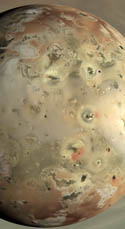



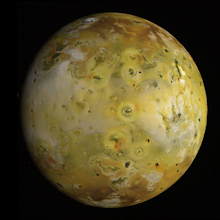

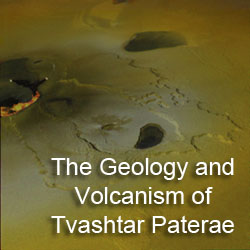
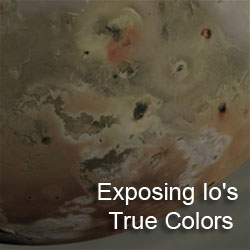
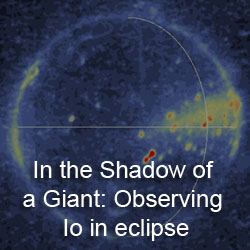
No comments:
Post a Comment